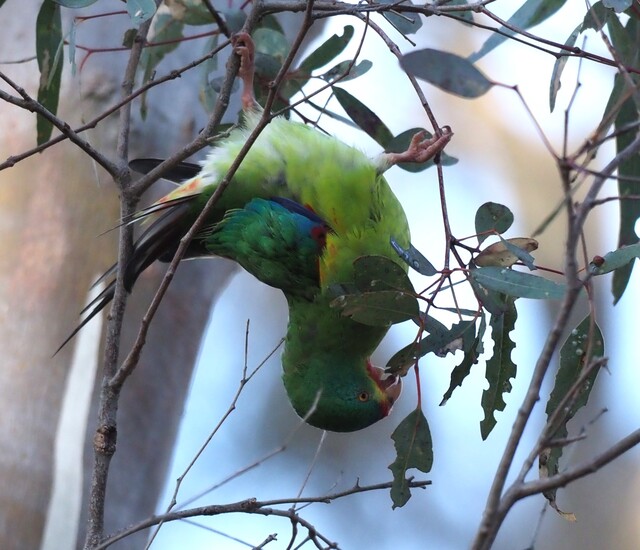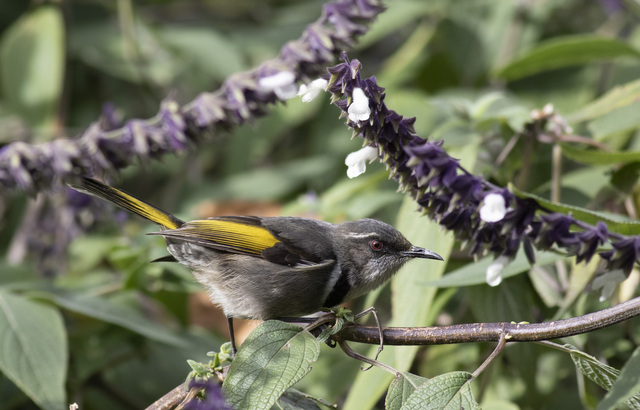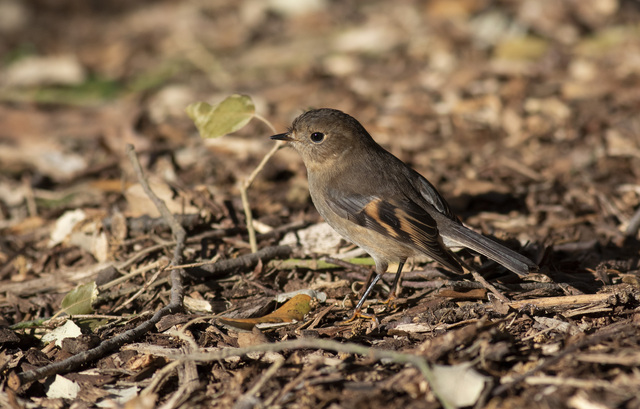On my way to work one day I drove via Swan Bay Pier, where there were many little pied cormorants, pelicans and silver gulls.
There was a lone great-crested grebe, which is one of my many favourite birds.
To my amazement, the grebe paddled to the shoreline of Swan Bay and proceeded to walk to the edge of the bay to have a rest on the bank. It is not very often that grebes are seen walking on land, as their legs are so far back on their body that they struggle to balance. This is an adaptation to being expert swimmers.
I took a few photos of the grebe walking, and then watched as a silver gull harassed it. Fortunately, the grebe didn’t seem too concerned and eventually the grumpy gull retreated.
I saw on Facebook that there were a few crescent honeyeaters at Geelong Botanical Gardens, as reported by Geelong Field Naturalist member Donna Hall. I have seen these birds in Tasmania and Wilson’s Promontory, as well as at Anglesea, but have never managed a decent photo.
I went to the gardens on my way to work on a sunny morning, not expecting to see the honeyeaters as it was a few days after I saw the post. When you’re a birdwatcher you know that they can be here one day and gone the next. I watched many eastern spinebills hovering around the salvia flowers, as well as a few female pink robins feeding on insects in the garden beds.
Then a flash of yellow grabbed my attention and a crescent honeyeater joined the spinebills feeding on the salvia nectar. These birds are known to move to coastal areas during autumn and winter from mountain forests.
I also read on Facebook that Robin Spry was walking at Ocean Grove Nature Reserve when she spotted a weebill, which is a tiny bird that is rarely seen in this area of Victoria.
I received a lovely email from Alan, who lives around Blue Waters Lake, who remarked that it was Interesting to see that Voice reader Lynne saw an eastern spinebill in her garden, as Alan also saw one for the first time in his garden about two weeks ago, but only fleetingly.
It landed on a bare plum tree then took off again. Within 20 minutes a brown thornbill (I think) landed in the lime tree and stayed for about 10 minutes,
possibly interested in the scale or other bugs on the tree. It was long enough for Alan to grab the camera and get a shot as it took off from the vegie garden. Alan was thrilled to spot two birds that he had personally not seen at Blue Waters Lake all within 20 minutes and from the back deck.
Alan also updated me on the pair of tawny frogmouths that seem to be hanging around Blue Waters Lake. They are around and hopefully they might be preparing to nest once the weather is not so cold.
The BWL resident swan pair have been actively chasing off other swans, possibly their own cygnets which are now about 10 months old. The previous two clutches were chased off at about six or seven months once the adults had started breeding again. Alan wonders whether this is a sign that the swans are going to breed again, now that there is sufficient water in the lake? Alan and his partner Anne were visiting friends in the Maryborough area who pointed out a spot where they had sighted some swift parrots. They did not see any the first two days but the next very frosty morning (-3 degrees) standing quietly in the forest, about 11 of these beautiful parrots came in and proceeded to feed in the canopy above. What a privilege to encounter these critically endangered birds, recently estimated to number only 500 in the
wild. Swift parrots are also seen in Ocean Grove when they make their way to Tasmania both before and after the breeding season.











